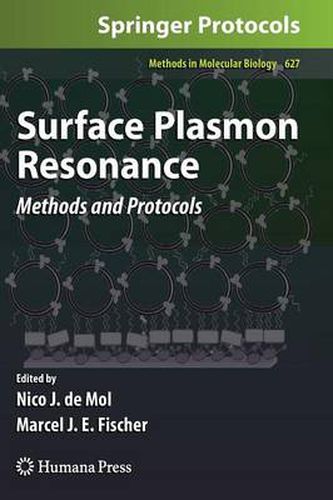Readings Newsletter
Become a Readings Member to make your shopping experience even easier.
Sign in or sign up for free!
You’re not far away from qualifying for FREE standard shipping within Australia
You’ve qualified for FREE standard shipping within Australia
The cart is loading…






This title is printed to order. This book may have been self-published. If so, we cannot guarantee the quality of the content. In the main most books will have gone through the editing process however some may not. We therefore suggest that you be aware of this before ordering this book. If in doubt check either the author or publisher’s details as we are unable to accept any returns unless they are faulty. Please contact us if you have any questions.
Surface plasmon resonance (SPR) has evolved into an exciting technique in biomolecular interaction analysis. The development of commercial SPR instruments has made the te- nique available to a wide scienti?c audience, and the number of publications in which the use of SPR is described is rapidly increasing. SPR is in use for many purposes from food quality control to the study of nanoparticles. Much research is now focused on devel- ing new SPR-related applications, e.g., SPR imaging, SPR arrays, SPR ?uorescence, and combinations of SPR with mass spectrometry and with electrochemistry. Biomolecular interaction analysis is at the core of many research projects. In principle, the setup of an SPR experiment is simple: There is a sensor surface to which one of the interacting partners (the ligand) is immobilized; the other partner (the analyte) is added in a ?ow or cell-like compartment. The binding phenomenon is monitored in real time as a change in SPR angle. An important issue is the choice of surface and the immobilization strategy. With SPR, it is possible to mimic the biological environment which is relevant for an interaction. For interactions in a water environment, sensor surfaces with hydrogels are available. Many biomolecular interactions take place in a membrane environment. For this, commercial sensor surfaces are available, or surfaces can be tailor-made. This volume contains several examples of building up of lipophilic surfaces. Nature abundantly makes use of multivalent interactions; multivalency can be mimicked on a sensor surface with immobilized ligands.
$9.00 standard shipping within Australia
FREE standard shipping within Australia for orders over $100.00
Express & International shipping calculated at checkout
This title is printed to order. This book may have been self-published. If so, we cannot guarantee the quality of the content. In the main most books will have gone through the editing process however some may not. We therefore suggest that you be aware of this before ordering this book. If in doubt check either the author or publisher’s details as we are unable to accept any returns unless they are faulty. Please contact us if you have any questions.
Surface plasmon resonance (SPR) has evolved into an exciting technique in biomolecular interaction analysis. The development of commercial SPR instruments has made the te- nique available to a wide scienti?c audience, and the number of publications in which the use of SPR is described is rapidly increasing. SPR is in use for many purposes from food quality control to the study of nanoparticles. Much research is now focused on devel- ing new SPR-related applications, e.g., SPR imaging, SPR arrays, SPR ?uorescence, and combinations of SPR with mass spectrometry and with electrochemistry. Biomolecular interaction analysis is at the core of many research projects. In principle, the setup of an SPR experiment is simple: There is a sensor surface to which one of the interacting partners (the ligand) is immobilized; the other partner (the analyte) is added in a ?ow or cell-like compartment. The binding phenomenon is monitored in real time as a change in SPR angle. An important issue is the choice of surface and the immobilization strategy. With SPR, it is possible to mimic the biological environment which is relevant for an interaction. For interactions in a water environment, sensor surfaces with hydrogels are available. Many biomolecular interactions take place in a membrane environment. For this, commercial sensor surfaces are available, or surfaces can be tailor-made. This volume contains several examples of building up of lipophilic surfaces. Nature abundantly makes use of multivalent interactions; multivalency can be mimicked on a sensor surface with immobilized ligands.